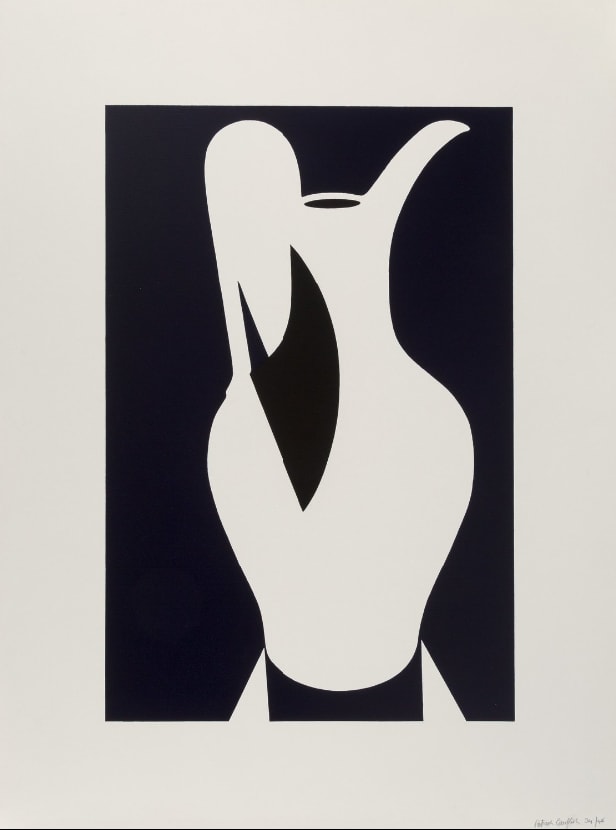Patrick Caulfield U.K., 1936-2005
Large White Jug, 1990
Screenprint on wove paper
Signed and numbered in pencil, lower right on recto
Signed and numbered in pencil, lower right on recto
107.3 x 81.3 cm - Sheet size
© The Estate of Patrick Caulfield
This artwork presents a strikingly simplified white vessel, elegantly set against a deep, dark background, showcasing a unique blend of flat colour planes and precise linear elements that embody a...
This artwork presents a strikingly simplified white vessel, elegantly set against a deep, dark background, showcasing a unique blend of flat colour planes and precise linear elements that embody a powerful sense of minimalism. The dramatic contrast transforms the jug into a luminous presence, with only the shadow cast by the handle providing dimensional detail.
The brilliant white form commands immediate attention while the dark background recedes, creating a sophisticated interplay between presence and absence. This treatment elevates the quotidian object into something monumental and iconic through sophisticated formal reduction, a distinctive transformation within the artist's mature period.
The inversion of positive and negative space demonstrates the artist's deep understanding of minimalist principles. By transforming a commonplace vessel into an object of contemplation, Caulfield engages with his overarching interest in extracting significant meaning from mundane objects. This approach highlights the interplay between form and perception, encouraging viewers to re-evaluate their relationship with the familiar.
The brilliant white form commands immediate attention while the dark background recedes, creating a sophisticated interplay between presence and absence. This treatment elevates the quotidian object into something monumental and iconic through sophisticated formal reduction, a distinctive transformation within the artist's mature period.
The inversion of positive and negative space demonstrates the artist's deep understanding of minimalist principles. By transforming a commonplace vessel into an object of contemplation, Caulfield engages with his overarching interest in extracting significant meaning from mundane objects. This approach highlights the interplay between form and perception, encouraging viewers to re-evaluate their relationship with the familiar.
1
van
4
